This week’s post is a bit short as I am still in the midst of my travel, but it should no doubt be an interesting update for my subscribers. I’m excited to say that for the next fortnight I will be in Dublin, getting to experience not only the popular sites around the city but learning about Irish language and literature from several leading scholars in the field!
I arrived in Dublin over the weekend and got to acclimate myself after a red eye flight by exploring the city for a bit. I started off by taking a self-guided tour of St. Patrick’s Cathedral which literally contained centuries of history within its masterfully-crafted stone walls. I was lucky enough to listen to a duo perform classical music for half an hour and experience the acoustics of the place in full force. It really set a pleasant mood for the day and for the trip as a whole!


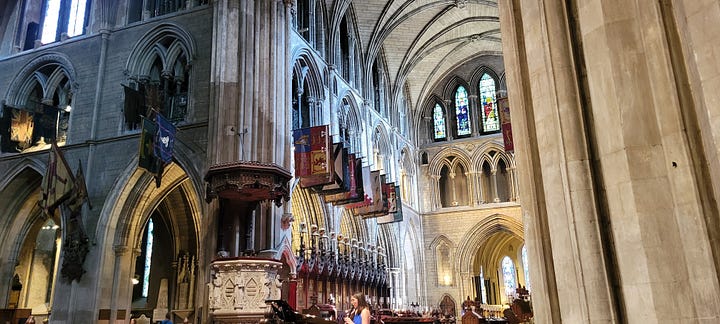
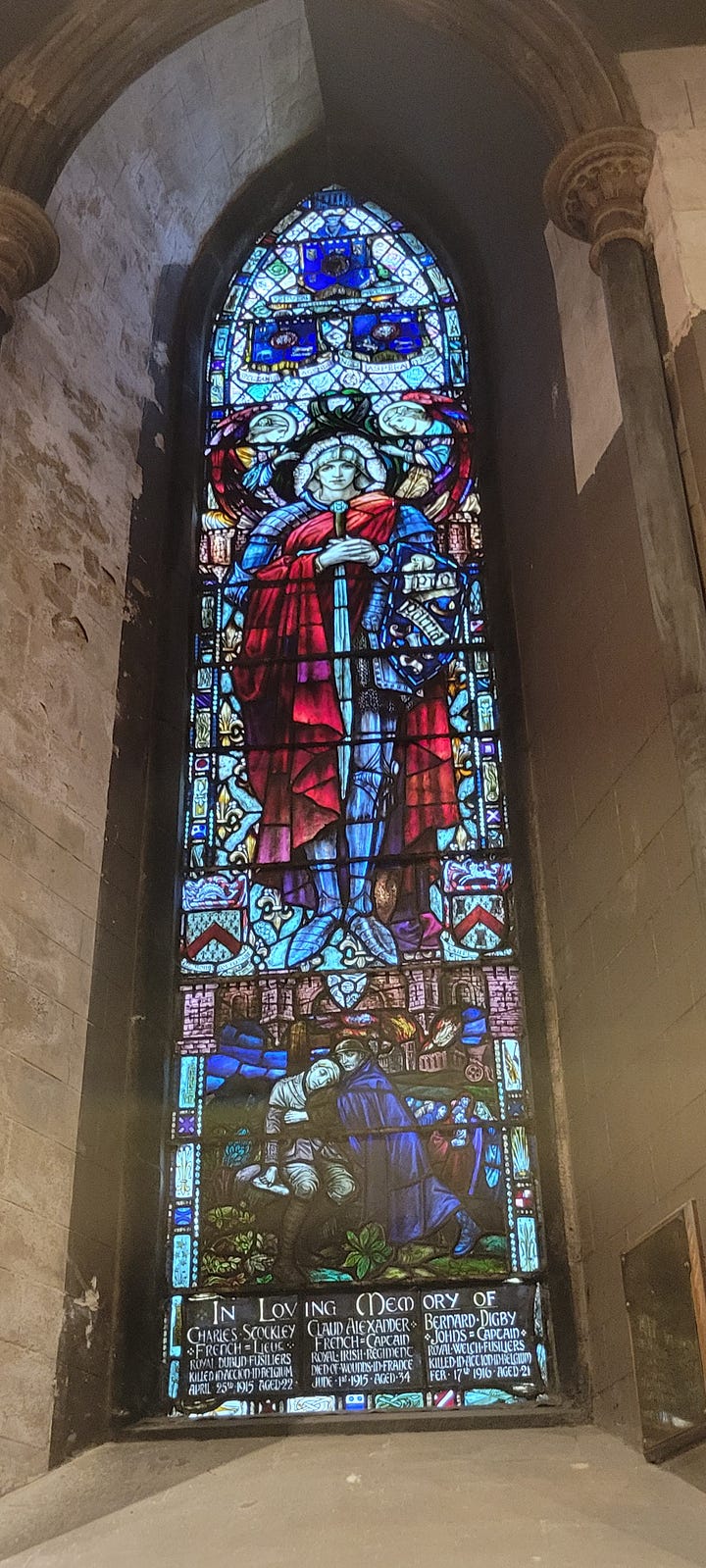
Everywhere I looked, I saw an artifact, plaque, or small detail that helped cement the stories history of the site that played parts for the rest of Dublin and Ireland as a whole. One of the most interesting features to me personally was the stained glass of St. Michael the Archangel descending from Heaven upon Ireland. The story of Michael1 is one that I heard many times in school and am fascinated with how it may relate to the theology and folk beliefs of Ireland—I’ll certainly be asking around while I’m here.
My next stop was just down the road at the Marsh Library, Dublin’s first public library which retains most of its original architecture and the books that filled its shelves since the 1800s. Although small, this is a great spot for bibliophiles to appreciate the atmosphere and historical facts about famous authors who came here to study, including Bram Stoker, author of Dracula. The featured exhibits throughout the library were several books embossed with gold-leaf, which made for a fun browse—although I couldn’t open any of the books to see what was inside!
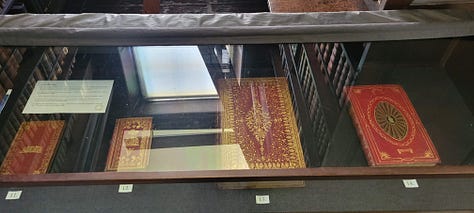

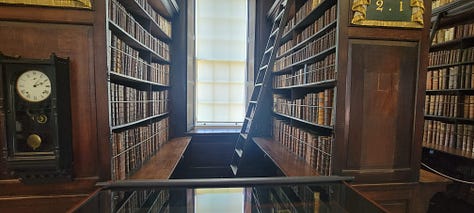
The next day I spent in two more museums. The first, Dublinia, is right down the road from St. Patrick’s Cathedral and is an interactive timeline of Dublin’s Viking Age and Medieval history. The exhibits are all fun yet informative glimpses into the peoples and ways of living that shaped the city’s history from when it began as one of Europe’s largest slave markets to a part of the broader medieval community.

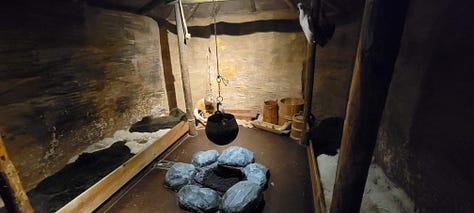
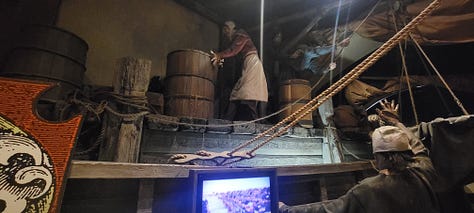
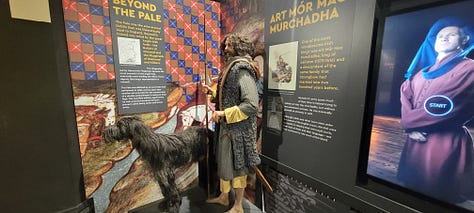
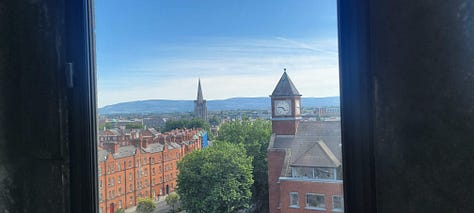
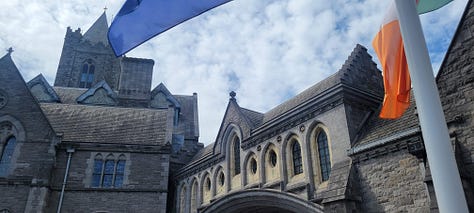
The building Dublinia itself is in is also called the “synod” and is connected by bridge to Christchurch Cathedral. At the very top of the museum is a tower that gives an almost 360-degree view of Dublin. Although not as tall or evenly-spaced as the Gravity Bar above the Guinness Storehouse, after witnessing the development of the city from huts to sprawling cobblestone streets through the museum it is definitely a meaningful way to end the tour.
I made it to the next museum just in time before they admitted the last guest. This one, called EPIC, is near the River Liffey in Dublin’s Docklands and tells the certainly epic and ongoing story of Irish immigration and its effect on the world itself. One interesting part of this museum was that guests are given a passport that they need to stamp at the end of every exhibit, which explain the stories of the individuals who left their home island, never to return, and tried to find a new life in strange places.

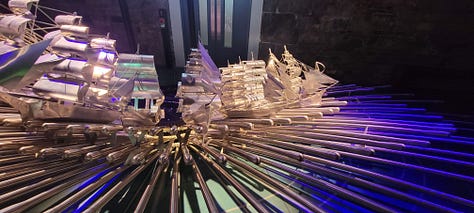


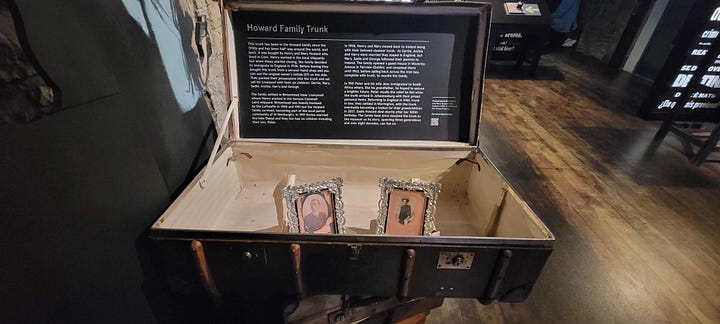
The museum covers several important areas of modern Irish history and culture. Guests start off by contextualizing the immigrations from the 1700s all the way into the 2000s. They then move on to the inspiring stories and facts about how Irish people have changed the world for the better by bringing their culture and ideas to all the places they came to call home. Storytelling, song, dance, food, and drink are included of course, but so are science, sports, and politics. The history and culture of Ireland certainly changed my life in some respects, but I hadn’t considered how much it had affected the rest of the world until now.


Outside the EPIC museum are two haunting sites that serve as extensions to the history of Irish immigration and hardships. The Famine Memorial and The Jeanie Johnston. The Memorial is a host of metal statues depicting tall, skeletal figures wrapped in rags shambling across the sidewalk beside the Liffey. The Jeanie Johnston is a Canadian-built ship that carried thousands of migrants over to the New World from Ireland. It is now forever docked as a reminder of the crafts many were forced to take when looking for new opportunities.
As for now, I’m still on my journey physically and academically, diving headfirst into research on Old and Early Modern Irish as well as Ancient Celtic and other subjects in Irish literature. I’ve had a pleasure exploring these topics in addition to new parts of Dublin. I may give some another update when I return, but for now, I hope you’ve enjoyed this quick update on my roving!
Thanks for reading this week’s post! Be sure to leave a like and a comment! Have you been to Dublin before or in or around the city? Where should I visit before I leave?
Refer your friends to Senchas Claideb to receive access to special rewards, including a personalized Gaelic phrase and a free, original short story exclusive to top referees!
Shoot me a message!
If you like what I do, consider leaving a tip!
I normally pronounce the name of the Saint/Archangel closer to the German pronunciation: My-kai-el.





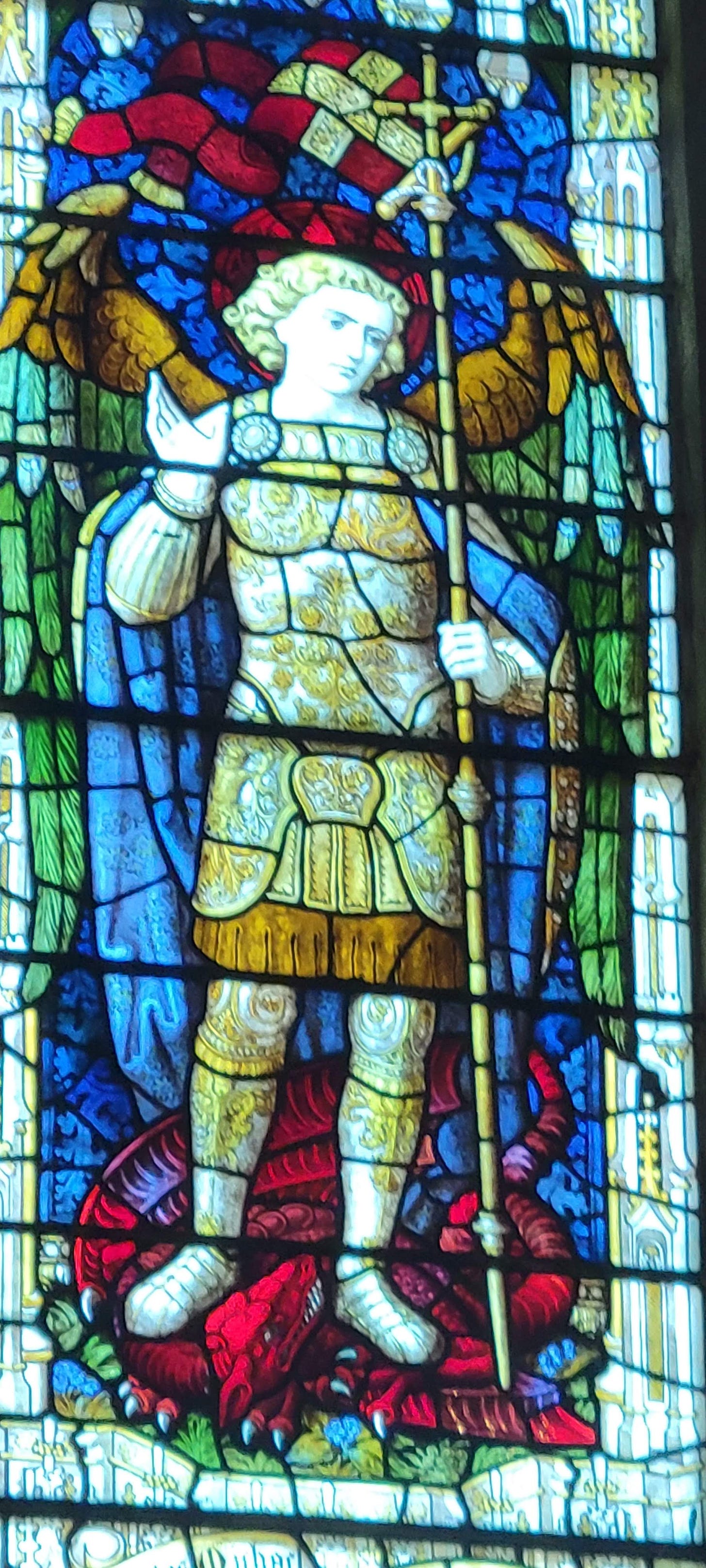
I love to read about travels and see photos from each person’s perspective. I visited Dublin once and I’m happy to hear you are enjoying it a bit while doing your research! Looking forward to reading more!